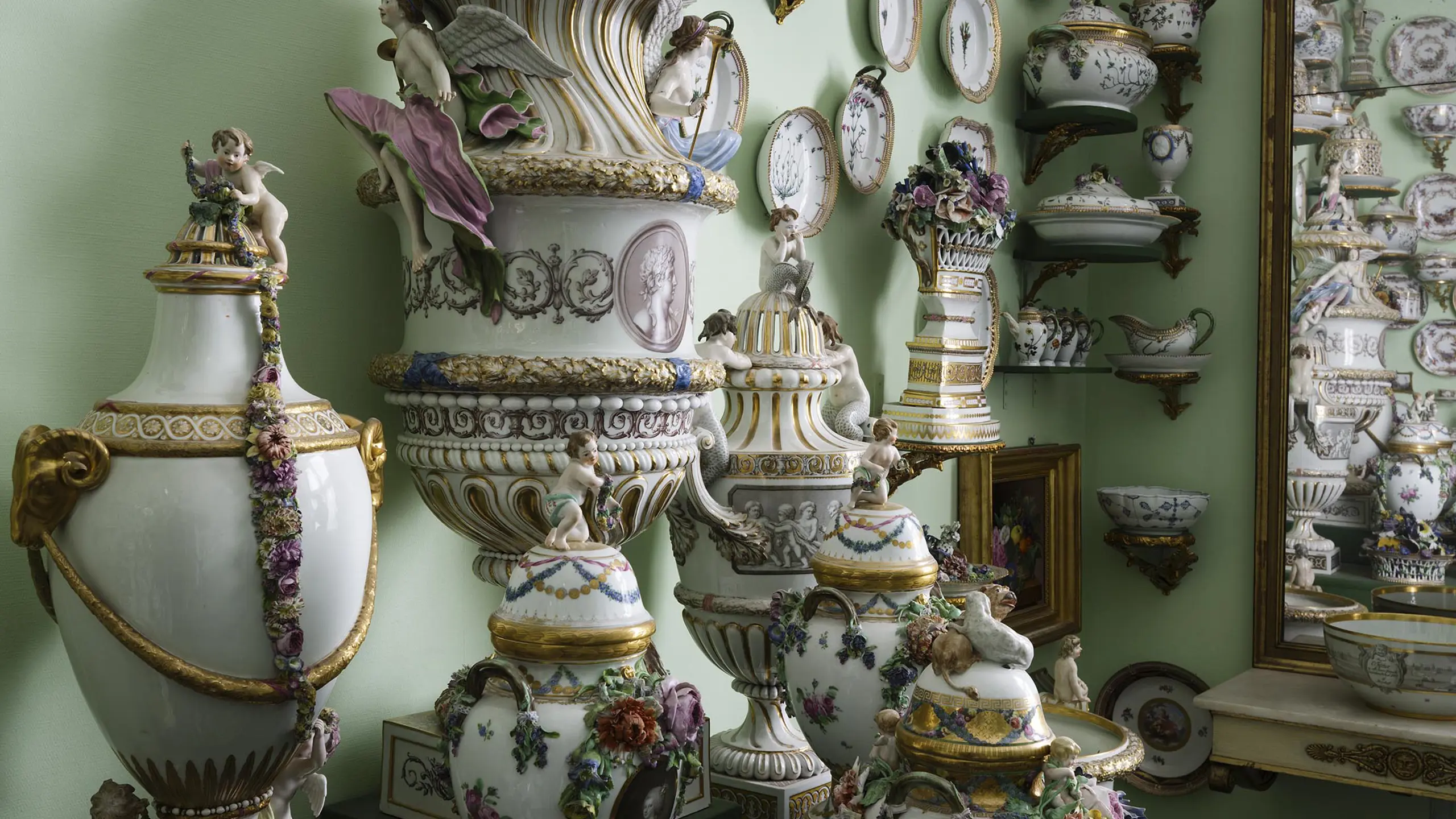The Porcelain Cabinet (room 23, closed)
The Porcelain Cabinet is closed

About the Porcelain Cabinet
During the late 17th century, it was fashionable for European royal and princely courts to establish porcelain rooms to display their collections of beautiful porcelain. Frederik IV visited the porcelain room at Charlottenburg in Berlin on his return journey from a visit to Italy in 1709, and that gave him the inspiration for the glass cabinet that he established at Rosenborg Castle.
However, the porcelain display was not established in this room until around 1860. The display featured some of the finest porcelain objects belonging to the Royal House. The collection included several pieces of Meissen porcelain from the first half of the 18th century, Sèvres porcelain and Chinese porcelain.
Many of the pieces in the collection were produced at the Royal Danish Porcelain Factory, chief among them the renowned Flora Danica service. Tradition has it that the service was originally commissioned as a gift to Catherine the Great of Russi but that she passed away before the set was completed. From 2022, the beautiful Flora Danica service has been displayed at Koldinghus. You can read more about the permanent exhibition here.
Objects in the room
If you are at the museum, you can admire the fascinating objects in the room and read more about them below.
The descriptions are brief and generally do not include images. They are intended as an added resource if you would like more detailed information about an item, such as who made it, its origin and its meaning.